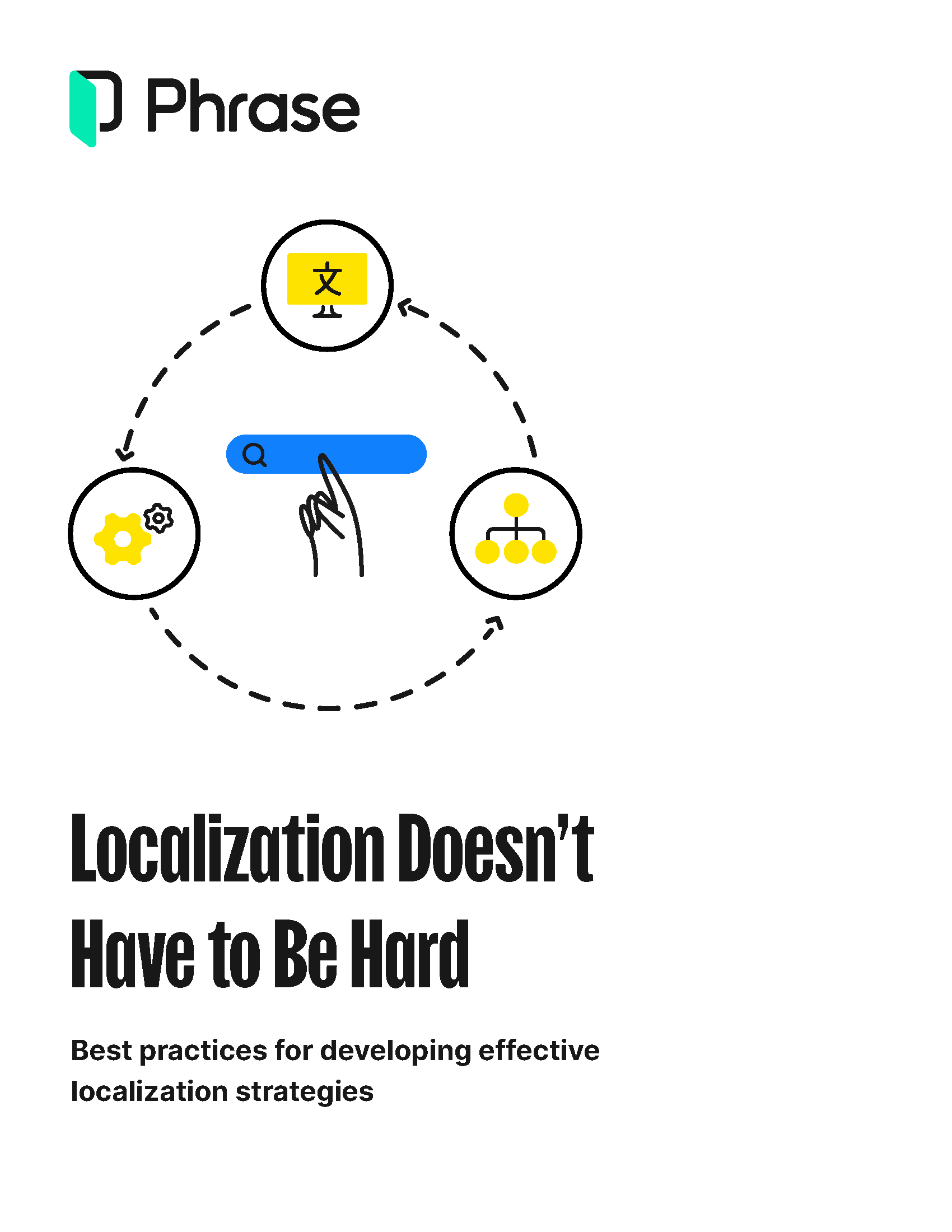Localization strategy
The Future of Video Games Is Global: Embrace the Shift with 5 Essential Strategies

Over the past few decades, video games evolved from casual hobbies to cultural phenomena, capturing the hearts of enthusiasts and building a community across diverse age groups, backgrounds, and corners of the globe. According to Newzoo, video gaming is expected to grow from 3.2B players worldwide in 2022 to 3.5B by 2025.

With an estimated +4.7% CAGR (compound annual growth rate) by 2025, the video game industry continues to be a powerhouse, sparking innovation and uniting players worldwide. As the virtual world continues to expand, so does the potential for game developers and business owners to tap into this global phenomenon.
Adopting a global perspective isn’t merely a strategic choice—it’s a crucial step for game businesses aiming to expand their player base and build deeper connections in diverse target markets. Keep reading to discover how you can also drive global growth for your game business.
Venturing into uncharted gamescapes
With more people gaining reliable mobile and internet access, an already massive potential audience for gaming is expanding internationally. The rise of social and casual gaming, coupled with a surge in players from emerging markets like Latin America and the Middle East, further underscores the unprecedented growth potential of the gaming industry.
| The world’s largest video game markets | ||
| Market | Revenue (USD billion) | Players (millions) |
| China | 45.8 | 742 |
| United States | 45 | 197 |
| Japan | 10 | 78 |
| South Korea | 7.9 | 34 |
| Germany | 6.6 | 50 |
| United Kingdom | 5.5 | 39 |
| France | 4.1 | 39 |
| Canada | 3.4 | 22 |
| Italy | 3.38 | 38 |
| Brazil | 2.6 | 101 |
Most of the world’s largest video game markets are non-English speaking (source: Newzoo)
With more than 3B gamers worldwide in 2022, the importance of adapting your game to the preferences and expectations of players in different target markets can’t be overstated. This process is known as localization and isn’t merely a linguistic adaptation—it’s a strategic imperative for owners, producers, and developers seeking to unleash their game’s full potential.

Free download
Best practices for developing effective localization strategies
Explore how to tackle localization management efficiently and engage customers across the globe in their native languages and local experiences.
When done right, localization enhances the gaming experience for players, wherever they are in the world—fostering inclusivity, accessibility, and engagement. By demonstrating an understanding of their language, culture, wants, and needs, you create a connection that goes beyond the screen, improving user satisfaction and opening up new avenues to reach diverse markets.
Game companies that invest in localization can expect to:
- Enter new markets faster and easier, with less risk
- Increase sales and customer loyalty in new markets
- Grow their competitive advantage over rivals who neglect localization
- Increase customer satisfaction across locales
- Experience longer customer lifetime value (CLV) in each market
- Reduce costs associated with customer support, training, and onboarding
5 key strategies for taking your game global
Fueling global growth for your video game demands a proactive mindset and adaptability. To position your business for success in the ever-changing global video game market, it’s a smart decision to:
- Conduct comprehensive market research
- Prioritize languages in high-demand
- Adopt a customer-centric approach
- Adapt your game to local market preferences
- Implement a pilot-and-scale-up strategy
Let’s explore each of these strategies to gain a more thorough understanding of how they work.
Market research: Unveiling untapped opportunities
The first step in navigating the global landscape of video games is market research. While your business may be thriving in its current market, there could be untapped opportunities waiting for exploration in other regions. Analyze where your competitors are succeeding, as their success might signal potential goldmines for your business.
Picture this: Your game is a hit in North America, but there’s a growing demand for similar experiences in Southeast Asia. By entering this region, you might find a hungry audience for your game. The objective isn’t to forsake your success at home—it’s about expanding your horizons and tapping into a new player base.
Language demand: Speak the player’s language
In a globalized gaming landscape, language is your passport to new territories. Prioritize languages with high demand, keeping in mind the diversity of your potential player base. While Welsh might be a niche language, English’s widespread usage across multiple countries could offer a broader reach.
Think of language as more than just a means of communication—it’s a connection. When your game speaks the language of your players, it becomes an experience tailored to their preferences and expectations. This not only enhances accessibility but also forges a deeper connection between your game and the diverse global audience.
Customer-centric approach: Players know it best
Engage your player base to gain insights into their language preferences. For example, if you have a sizable German customer segment using your English-language product, their inclination towards German content might be high. Avoid relying solely on assumptions—strive to consistently inquire about your players’ language preferences through surveys or feedback forms.
By adopting a customer-centric approach, you not only ensure that your game resonates with its audience, you’re also building a community around it. The more players feel heard and understood, the more likely they are to stay loyal to your brand. It’s not just about delivering a product—it’s about creating an immersive and inclusive gaming experience.
Local adaptation: It’s more than just translation
Expanding your game’s language support doesn’t necessarily mean transferring content from one language to another. Effective localization involves understanding regional preferences and tailoring gameplay, narratives, and interfaces accordingly. This enables your game to create a more engaging and satisfying experience for players worldwide.
Evaluate the feasibility of implementing language support by exploring various localization technology solutions. By utilizing cloud-based localization platforms, you can combine established translation tools with AI-powered translation to automate the entire translation process. Adopting this approach allows you to allocate resources towards more strategic endeavors, such as cultural sensitivity and game promotion.

Unlock global business with the Phrase Localization Platform
Expand into new markets with all the tools you need in one technology suite for high-quality, fast, and scalable localization.
Pilot and scale up: Testing the global game waters
The global expansion of your game business doesn’t have to be a giant leap. Begin by prioritizing the localization of character dialogues, deferring adjustments to less visible elements in the initial phase. Closely monitor player engagement and performance metrics. This strategic approach allows you to validate your hypotheses without committing to a full-scale language rollout.
Piloting enables you to identify which languages resonate the most with your audience and where adjustments are needed. Once you have a clear understanding of the impact, scale up gradually based on the results. This phased approach minimizes risks while maximizing the potential for success in new markets.
Step into global play with game localization
In global gaming’s evolving landscape, a growing audience with reliable mobile and internet access presents a massive opportunity. To unlock this potential, connect with international customers, drive engagement, and improve conversion rates, video game businesses need effective strategies centered around localization.
Through conducting thorough market research, prioritizing high-demand languages, adopting a customer-centric approach, adapting games to local preferences, and employing a pilot-and-scale-up strategy, you can expand your player base on a global scale and drive growth that will position your business as an industry frontrunner.
Speak with an expert
Want to learn how our solutions can help you unlock global opportunity? We’d be happy to show you around the Phrase Localization Platform and answer any questions you may have.





